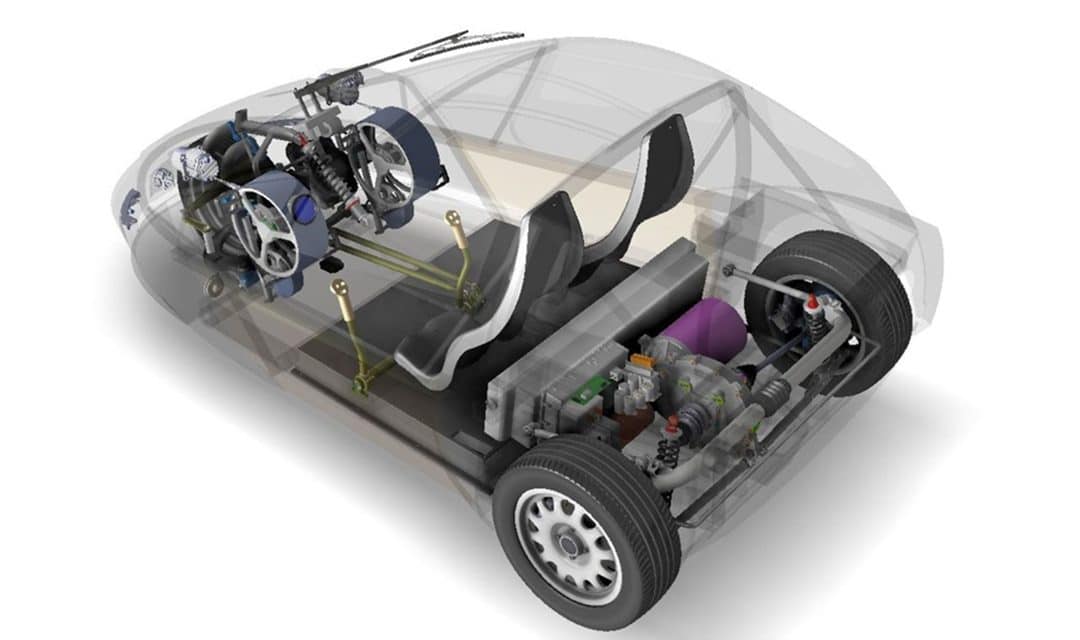Please note: Our texts are translated automatically. Errors may occur during this process.
After the vehicle assemblies such as the TWIKE 5’s powertrain and chassis have already been presented, here is an insight into the development of the on-board electrics and electronics.
In his master’s thesis, TWIKE employee Adrien is working on the integration of modern human-machine interfaces (HMI), the interfaces between the vehicle electronics and the user’s input and output options. The overall package developed is so universal that it can be used as a central element for entertainment and data communication for the upcoming TWIKE 5 as well as an extension for the existing TWIKE 3 at the same time.
The basis is a freely programmable microcomputer called Raspberry Pi, whose hardware can be built up and expanded as desired to respond to a wide variety of requirements. Thus, the data of the older RS485 bus system of the TWIKE 3 as well as the CAN bus information of the TWIKE 5 can be read out with this system and displayed in any form or used for further evaluations and calculations. The image shows the energy consumption and distance profiles recorded during a test drive with the TWIKE 3, which can be used for display on a mobile device, for example. A prototype app for smartphones already exists for this purpose, which communicates with the vehicle via WLAN and opens up a wide range of other possibilities.
